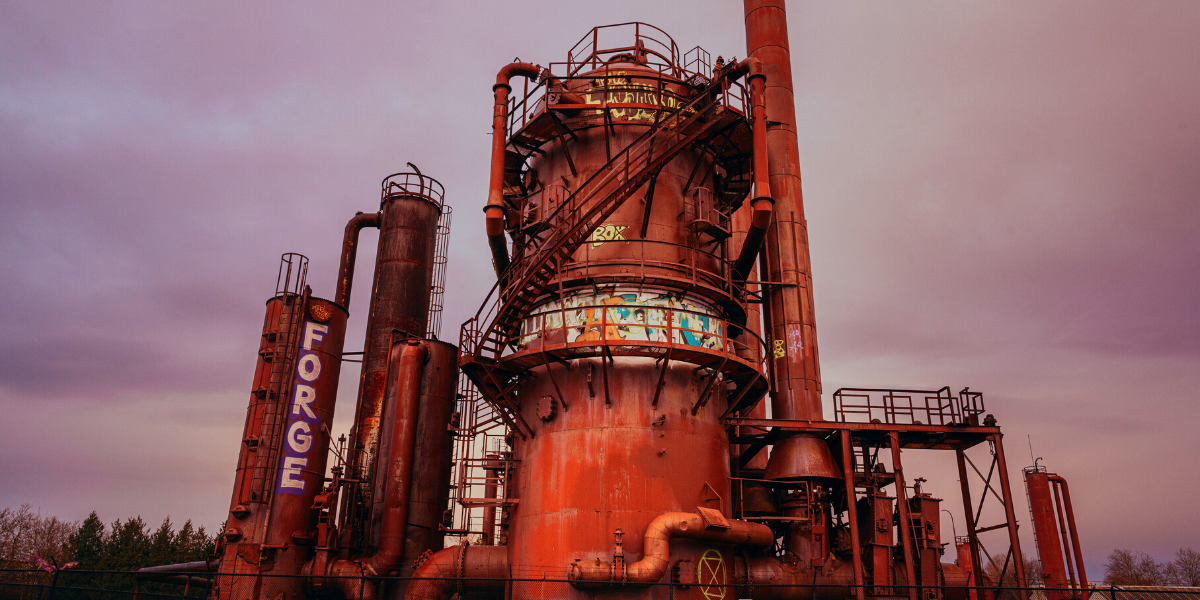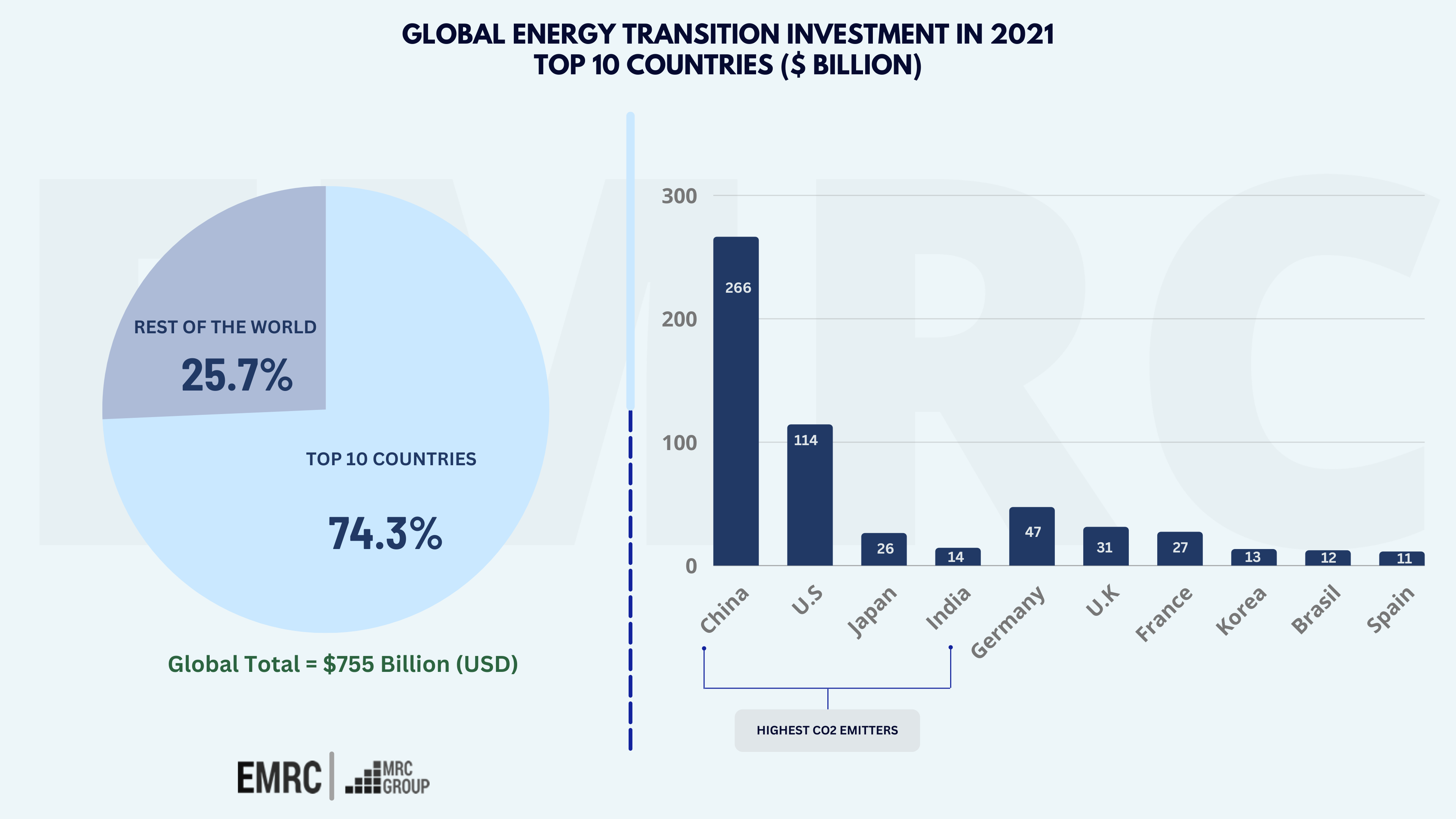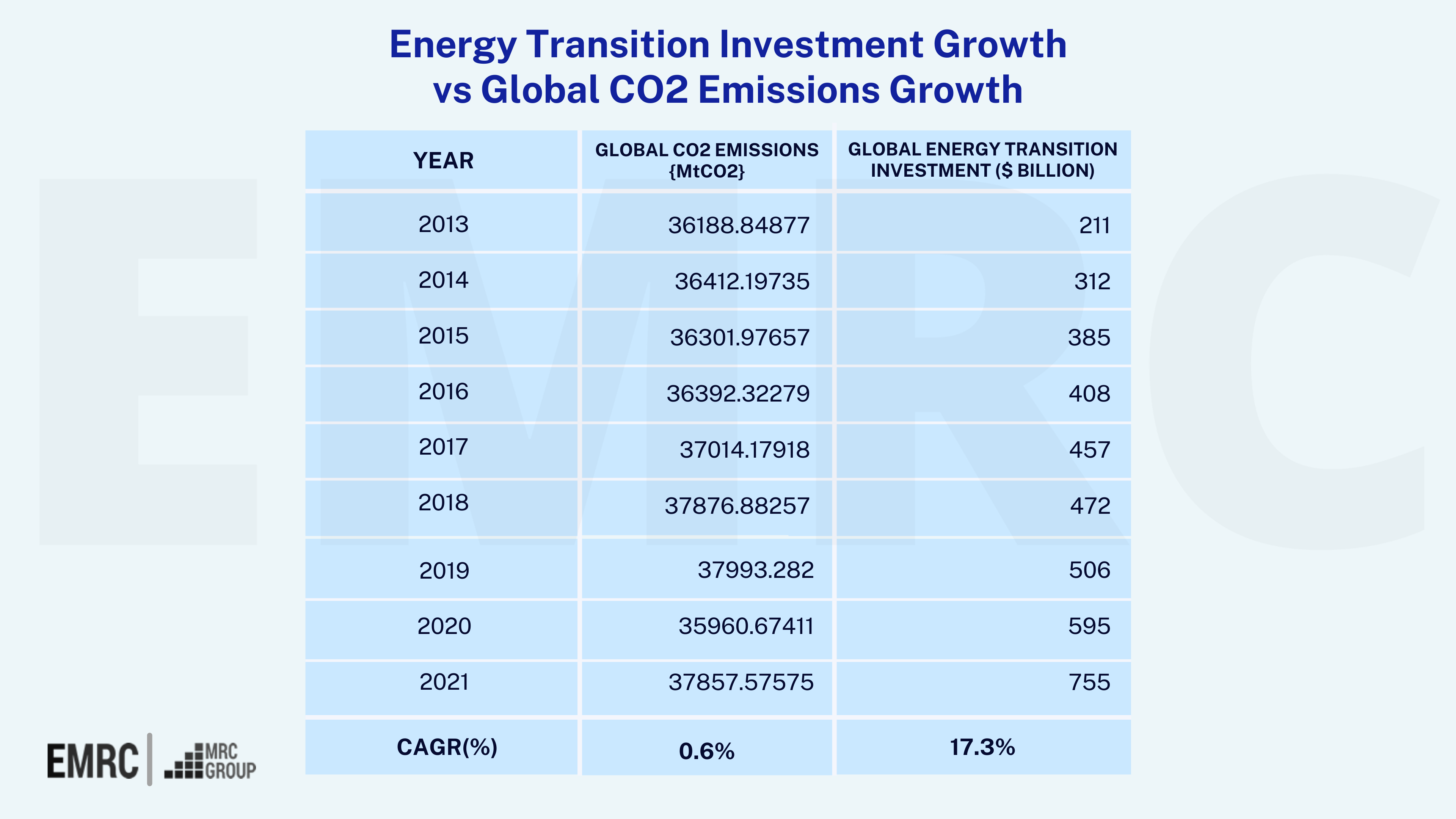
Any way you look at it, the energy transition will be expensive.
According to a 2021 report commissioned by the United Nations High-Level Climate Action Champions, the world requires an investment of 125 trillion USD by 2050 to reduce emissions and reach the net-zero goal, with 32 trillion needed between 2021 and 2030.
In contrast, the International Renewable Energy Agency (IRENA) estimates that 5.7 trillion USD of annual investments is required between 2022 and 2030. IRENA also estimates that 700 billion USD of investments must be redirected from fossil fuels to renewable energy in order to reach the net-zero target. So, any way you look at it, transitioning to a net-zero world will require a lot of money.
This article will consider the global energy transition investments from last year and see what we can expect in 2022.
Energy Transition Investments in 2021
Global investment in energy transition has grown significantly every year since 2014, and according to a report by BloombergNEF, 755 billion USD was spent on energy transition investments last year. This is the highest on record so far.
Historically, renewable energy has accounted for the largest chunk of energy transition investment and last year was no different. In 2021, 366 billion USD went to renewable energy, followed by electric transportation with 273 billion USD.
While energy transition investments grew in every region, the Asia Pacific region received the most investment. However, 74% of last year’s energy transition investments came from only ten countries, China, the U.S., Japan, India, the UK, France, South Korea, Germany, Brazil, and Spain; four of which were among the top five highest carbon emitters in 2021.

755 billion may be a far cry from 5.7 trillion but this figure does not account for capital invested in research and development or manufacturing. It’s made up of only capital spent on specific projects focused on deploying low-emission technology. This means that much more than 755 billion USD might have been invested in the global energy transition last year.
Energy Transition Investments in 2022
2022 has been an interesting year in the world energy market. Russia’s invasion of Ukraine early in the year sent the cost of natural gas soaring, and this has resulted in increased coal combustion for power generation. It also appears that funding that could have gone to renewable energy projects is now being redirected to fossil fuel projects. Austria, for instance, plans to convert a gas-fired power plant to coal as it prepares for an energy crisis. Denmark has scrapped plans to decommission three oil and coal-fired power stations in March 2023. France recommissioned an already decommissioned coal power plant, and several states in the United States have delayed planned closures of their coal power plants. We can expect a rise in carbon emissions this year and all of this is being done in anticipation of an energy shortage caused by a war between the two countries. This is bad news for energy transition because renewable energy accounts for most of the investments that happen in the energy transition space, and if funding is being redirected to fossil fuels, this may negatively impact overall energy transition investments in 2022.
The transition was never going to be easy, but a significant setback has occurred this year. An IRENA report published in March 2022 stated that the world was not on track for net zero and emphasised the need for ambitious and aggressive plans to get us back on track. Unfortunately, the world was not prepared for current global events either and we are probably worse off than we were in March.
With all that’s happening, the big question is, “Will global investment in the energy transition increase this year as it consistently has for the past eight years?”. It’s possible.
In 2021, the world economy relied on coal to fuel its post-pandemic recovery, just like many countries are turning to coal in anticipation of an energy crisis in 2022. Coal is great for high production levels because it keeps costs low, so it was ideal for many countries on their path to recovery in 2021, but it’s also the dirtiest fossil fuel. According to the International Energy Agency (IEA), the world reached a “historically high level of coal power generation” last year. But despite this, energy transition investment increased by 27% from 595 billion USD to 755 billion USD.
As a matter of fact, data from the past few years shows that energy transition investments have risen consistently regardless of a decline or rise in global Co2 emissions. The compound annual growth rate (CAGR) of energy transition investments and carbon emissions also demonstrates that the growth of energy transition investments is far greater than the growth of carbon emissions.
Therefore, it is likely that even if global greenhouse gas emissions rise as expected in 2022, global energy transition investments will also increase. The question is, will they reach the level required according to IRENA estimates?
We’ll have to wait and see













